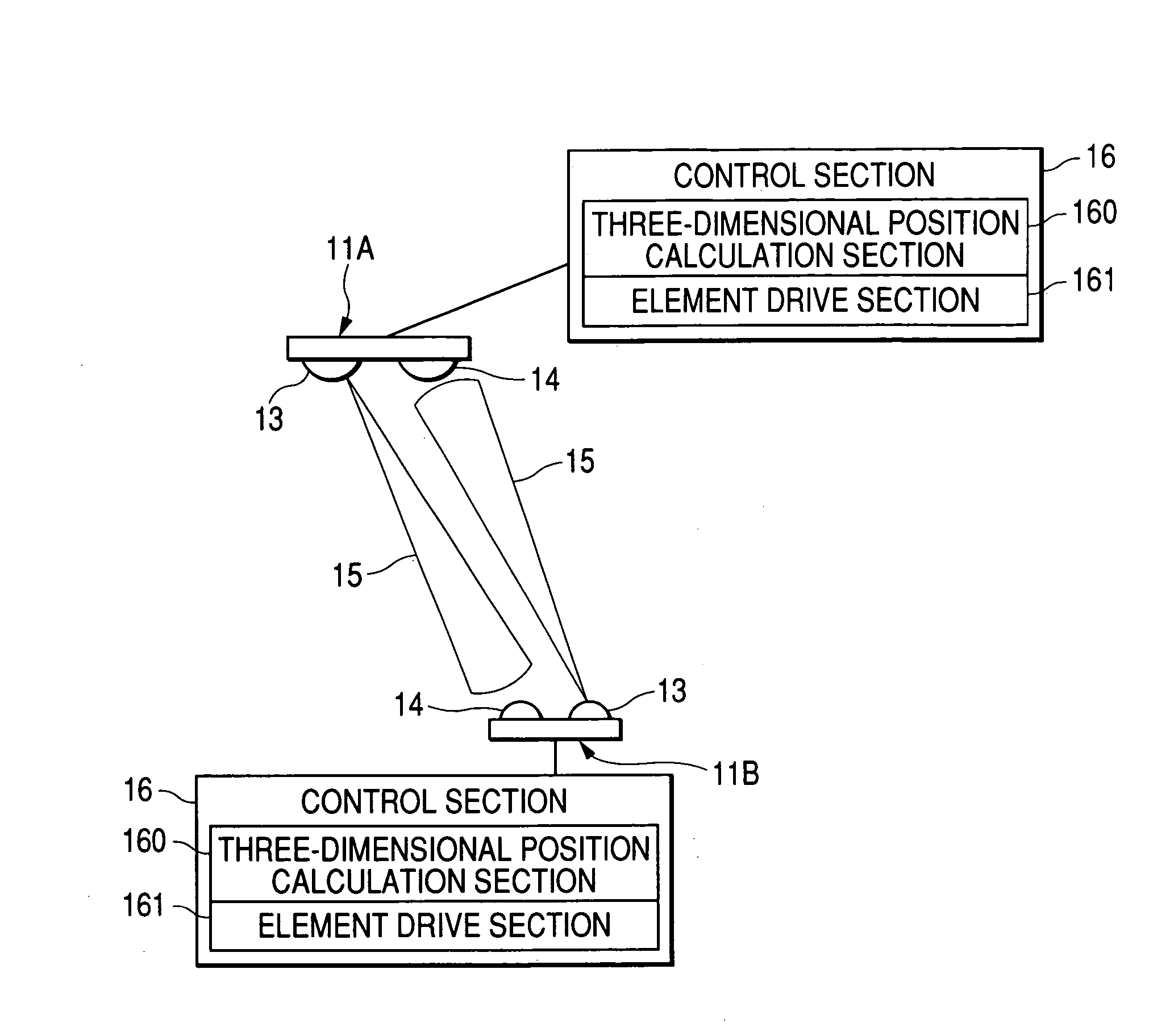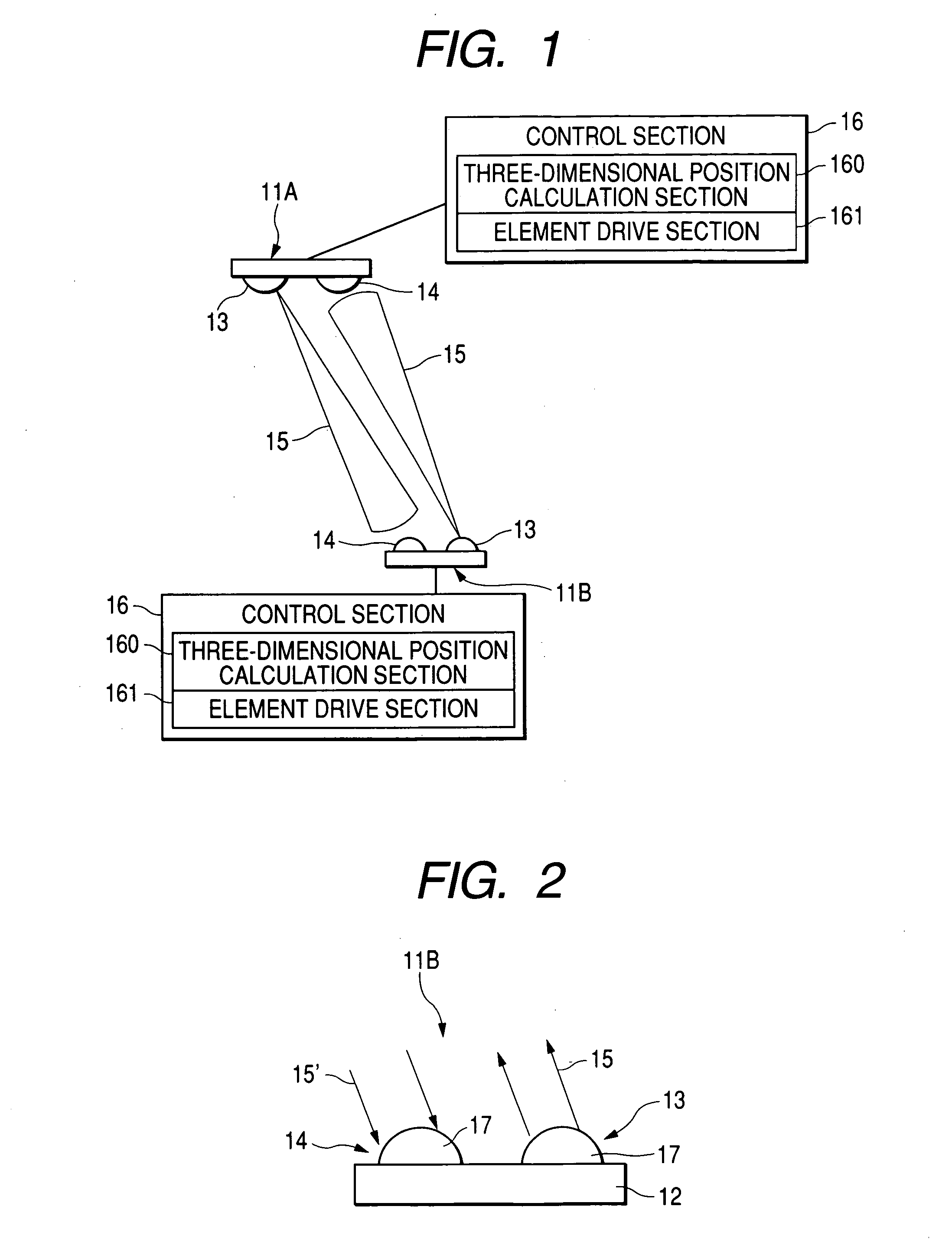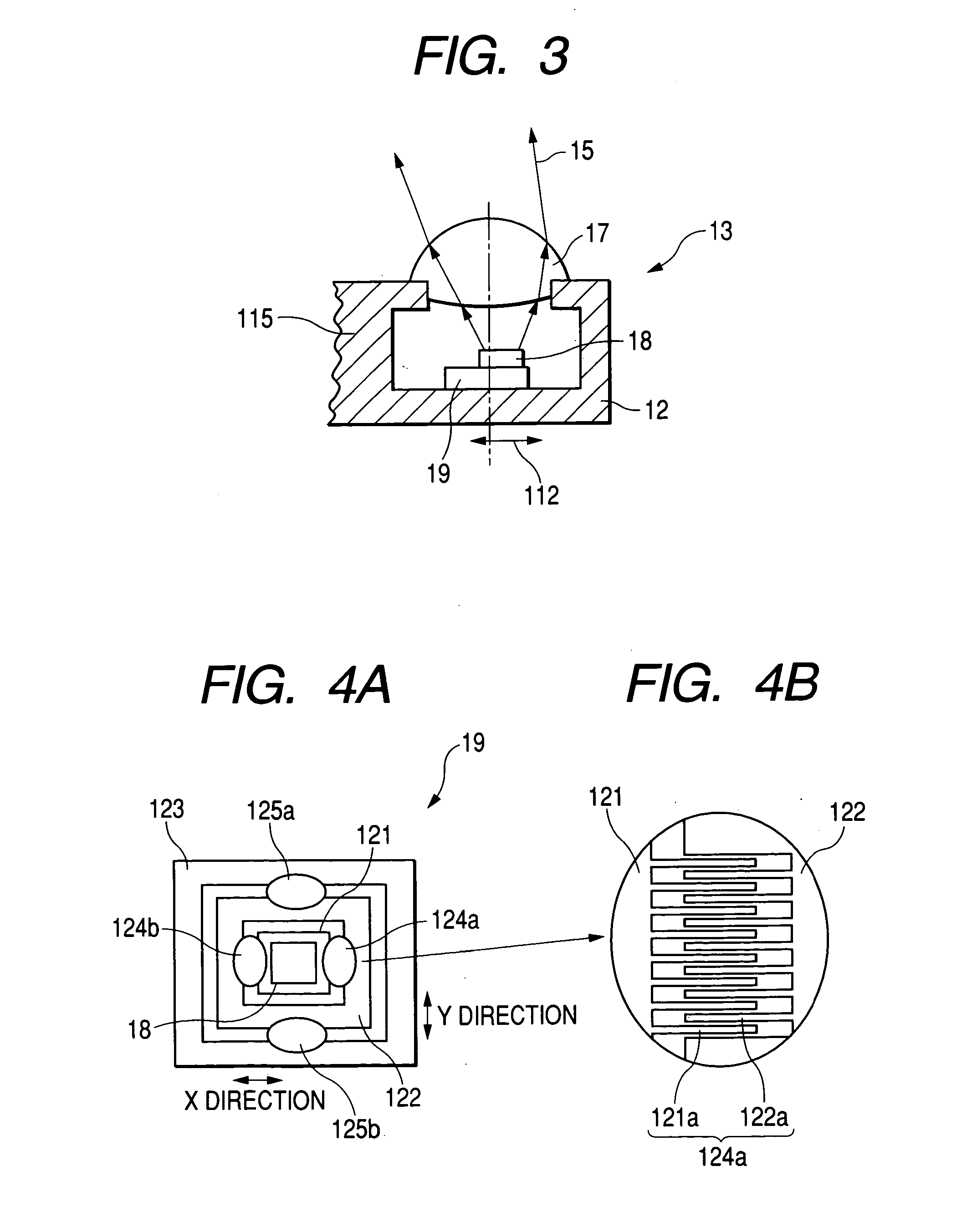Wireless optical system
a wireless optical system and optical communication technology, applied in electromagnetic transmission, electrical equipment, transmission, etc., can solve the problems of increasing the number of received inputs, difficulty in applying optical communication techniques to mobile equipment, and difficulty in maintaining connection with slave devices, so as to achieve significant miniaturization of movable sections, increase the quantity of light entering the receiving element, and reduce the effect of slave device maintenan
- Summary
- Abstract
- Description
- Claims
- Application Information
AI Technical Summary
Benefits of technology
Problems solved by technology
Method used
Image
Examples
first embodiment
[0036] (First Embodiment)
[0037]FIG. 1 shows an optical wireless system according to a first embodiment of the invention. The optical wireless system of the first embodiment transmits and receives an information signal between a master device 11A serving as an optical wireless device and a slave device 11B serving as another optical wireless device. The master device 11A and the slave device 11B have identical configurations. They are respectively configured to have a transmitting section 13, a receiving section 14, and a control section 16 including a three-dimensional position calculation section 160 for calculating a three-dimensional position of the transmitting section 13 of the master device 11A or the slave device 11B on the other end and an element drive section 161 for driving an MEMS (Micro Electro-Mechanical System) element to be described later.
[0038] As shown in FIG. 1, at the time of initiation of transmission and reception, the master device 11A transmits transmission...
second embodiment
[0049] (Second Embodiment)
[0050]FIG. 7 shows the receiving section 14 of the slave device 11B according to a second embodiment of the present invention. As shown in FIG. 7, the receiving section 14 differs from the transmitting section 13 shown in FIG. 3 only in that the light-emitting element 18 is replaced with the light-detecting element 116. In other respects, the receiving section 14 is configured in the same manner as is the transmitting section 13. The light-detecting element 116 is disposed in the vicinity of the focal point of the condenser lens 17, and the single pin photodiode 117 is stacked on the MEMS element 19. The MEMS element 19 scans the light-detecting element 116 in directions 112 within two dimensions.
[0051] The size of the pin photodiode 117 is made substantially equal to the diameter of the optical spot 118 converted by the condenser lens 17. The position of the pin photodiode 117 is two-dimensionally wobbled, and the intensity of the received light 15′ is sy...
third embodiment
[0053] (Third Embodiment)
[0054]FIG. 8 shows an optical wireless device according to a third embodiment of the present invention. The third embodiment is based on the first embodiment, wherein the light-emitting element 18 and the light-detecting element 116 are disposed in the vicinity of the condenser lens 17 so as to transmit and receive by way of a common beam splitter 119 and the common condenser lens 17. According to the third embodiment, the position of the light-emitting element 18 and that of the light-detecting element 116 are scanned with respect to the common condenser lens 17. The transmitting section and the receiving section are assembled into a single unit such that transmission is performed by controlling the transmitting and reception directions and the directional angle. As a result, the optical wireless device can be made compact to a much greater extent.
[0055] The present invention is not limited to the first to third embodiments set forth and is susceptible to ...
PUM
 Login to View More
Login to View More Abstract
Description
Claims
Application Information
 Login to View More
Login to View More - R&D
- Intellectual Property
- Life Sciences
- Materials
- Tech Scout
- Unparalleled Data Quality
- Higher Quality Content
- 60% Fewer Hallucinations
Browse by: Latest US Patents, China's latest patents, Technical Efficacy Thesaurus, Application Domain, Technology Topic, Popular Technical Reports.
© 2025 PatSnap. All rights reserved.Legal|Privacy policy|Modern Slavery Act Transparency Statement|Sitemap|About US| Contact US: help@patsnap.com



